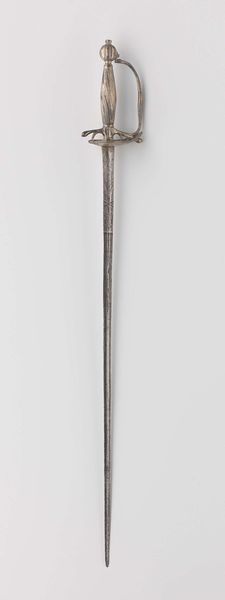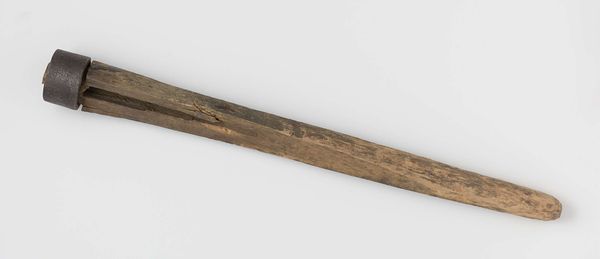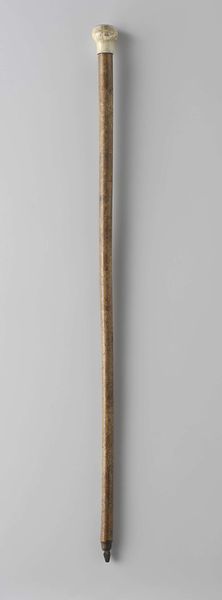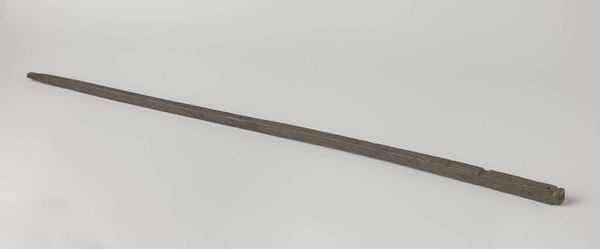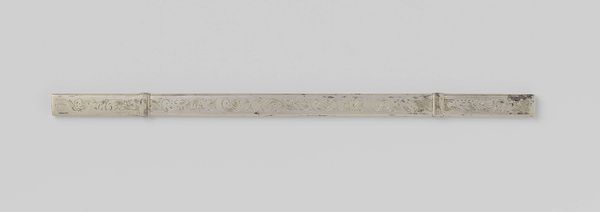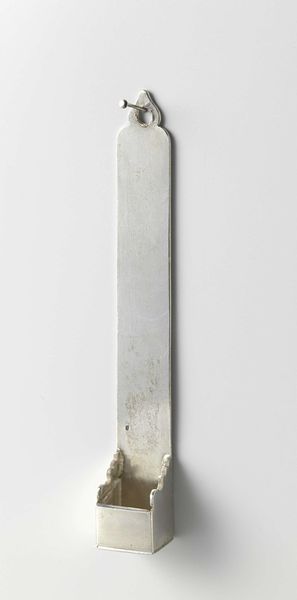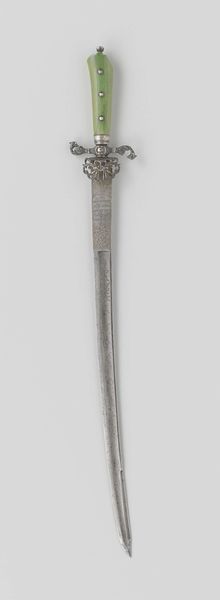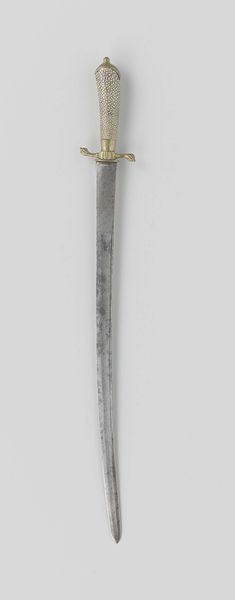
silver, metal
#
neoclacissism
#
silver
#
metal
#
form
#
line
#
decorative-art
Dimensions: length 25.3 cm, length 5.8 cm, weight 32 gr
Copyright: Rijks Museum: Open Domain
Editor: Here we have Th.C. Moot's "Breikoker," made around 1812-1830 out of silver. It's incredibly simple—just a long, cylindrical form. How would you interpret a work like this? Curator: As a materialist, I'm immediately drawn to the silver itself. It suggests a level of affluence, of course, but it's more than that. Silver requires labor, mining, smelting, crafting. This object embodies a whole chain of social and economic relationships, wouldn't you say? Editor: Yes, definitely. The mining and the crafting involved resources, labour…was such a commonplace object normally made with this metal? Curator: Exactly. Think about who had access to such resources during this Neoclassical period. Was this for everyday use or display? And consider the function of a 'breikoker'– knitting needle case. Is this elevated from functional object to a statement of status through the choice of material and meticulous crafting? How does the simple form then interact with our understanding of class and labour? Editor: That's fascinating. So it's not just about the object itself, but about the systems and labour that enabled its creation. Does its simplicity further emphasize those economic dynamics, deflecting from artistic frills to spotlight sheer resources? Curator: Precisely! Its sleekness reinforces how valuable material extravagance can be when the work itself shies away from more labour-intensive artistry. This allows us to discuss craft and utility in equal measure; how the material here subverts the purpose of this metal. It allows us to examine the consumption and values of that era. Editor: I see what you mean. I'd initially overlooked its function, focusing only on the clean design; it makes one wonder what type of knitting this object was meant to hold, and whether that labour would have aligned with someone of this stature. Thank you, I appreciate learning to contextualize even the simplest things from such perspective. Curator: Of course. Always delve deeper than the surface: every artifact tells a story about production, value, and the social structures that created it.
Comments
No comments
Be the first to comment and join the conversation on the ultimate creative platform.
